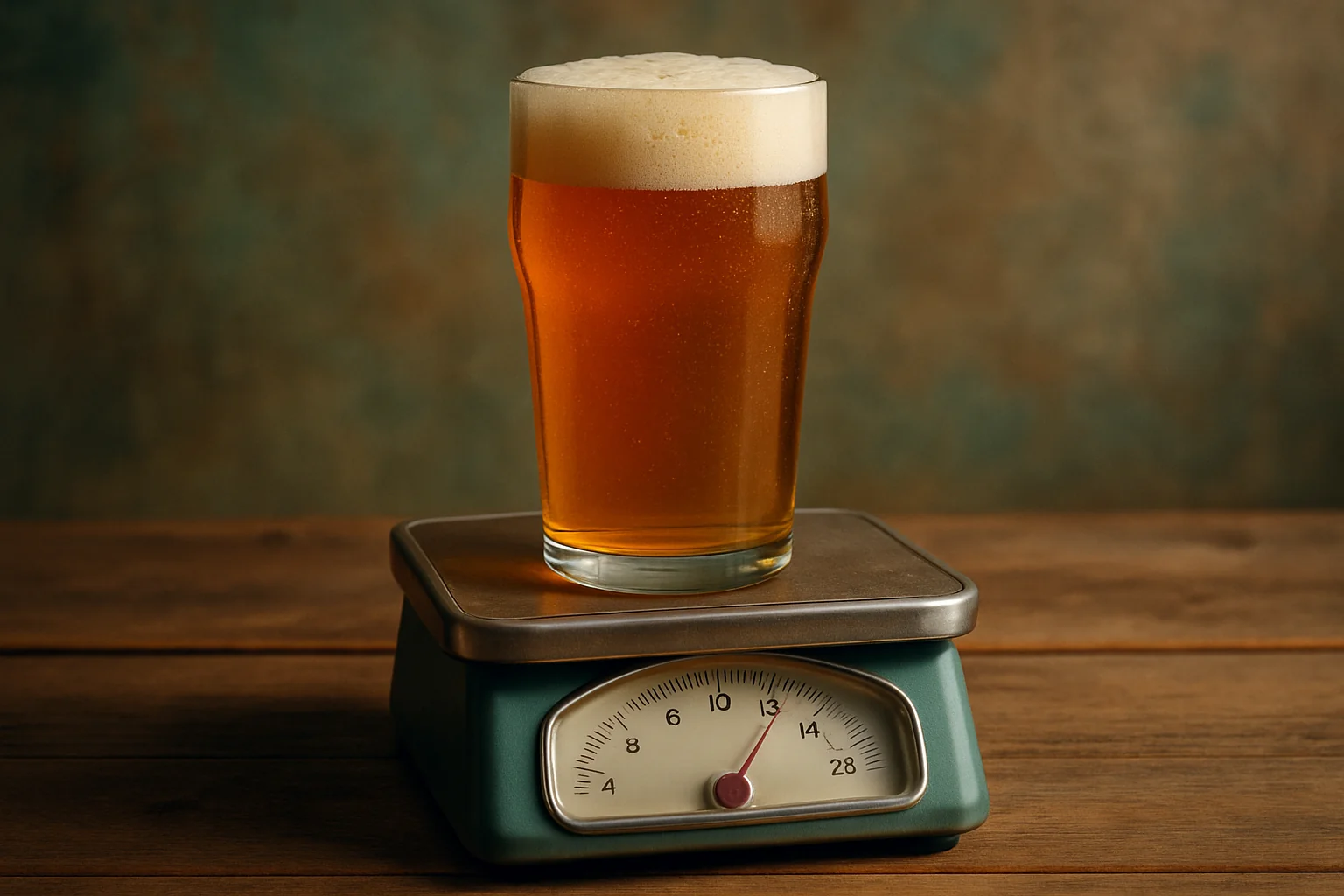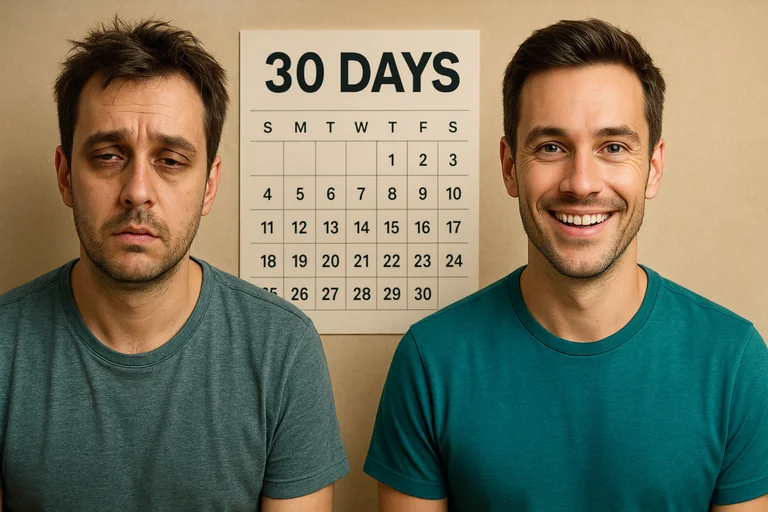A 2 minute assessment to get a personalized mental health or alcohol recovery plan.
Finding out how many calories in a beer will be consumed in a single serving isn’t easy. And each calorie in beer is empty, which adds to the problem.
What You’ll Discover:
- What beer nutrition facts are and aren’t included on the label.
- The average calories in different types of beers.
- How serving size can add calories without drinkers realizing it.
- What alternative beverages are better than standard beer.
- Strategies for controlling the amount of beer calories you consume.
- How to get help if beer consumption is becoming problematic.
While “light” beer marketing promotes lower calories and craft breweries emphasize natural ingredients, the reality of drinking beer tells a dramatically different story. Many beer drinkers end up consuming way more calories than they realize, and it’s not just because the alcohol impedes impulse control.
Various factors contribute to excess beer calorie consumption, starting with the product packaging.
Non-Existent Beer Nutrition Facts Make Calorie Counting Difficult
Have you noticed that the label on a bottle of beer is very different from just about everything else you’ll find in the grocery store? Millions of beer drinkers are in the dark about their actual caloric intake because there isn’t a beer nutrition facts label.
The beer industry has masterfully obscured nutritional information for decades. Unlike food products, alcoholic beverages aren't required to display nutrition labels, leaving consumers guessing about the caloric content. Beer manufacturers are required to provide certain information, which can give you a little bit of information to go on:
Alcohol by Volume (ABV)
Remember this simple equation: ABV = Calories. Alcohol contains seven calories per gram. So the higher the alcohol content is the more calories beer will have.
Volume
The actual volume will also be listed. Many bottles contain 16-22 ounces, not the standard 12 ounces that denotes a single serving.
Ingredients
The ingredients are another indicator of whether or not a beer is calorie dense. Fruit, lactose and added sugars mean extra calories beyond the amount of alcohol in a beer.
The only other way to figure out the calories in beers is to do your own research. Beer manufacturers will sometimes provide calorie information on their website. There are also some average numbers for calories in beer based on the type you’re drinking.
Beer and Calories: Breaking It Down by Your Favorite Beverage
Light Beer Calories: The Diet Deception
Light beer marketing has convinced millions of people that these options can support weight loss goals when reality reveals that isn’t the case. Why? Because barring a few exceptions, most light beers aren’t far off from regular beers in terms of calories.
Miller 64 contains just 60 calories per 12-ounce serving, which is achieved through minimal alcohol content (2.8% ABV). This is significantly lower than standard beer calories. But most 12 oz light beers contain about 100 calories.
- Bud Light (110 calories)
- Coors Light (102 calories)
- Miller Lite (104 calories)
And the issue with light beers goes beyond calorie count. The psychological permission granted by "light" labeling encourages overconsumption. Many drinkers feel justified in having "just one more" because they've chosen the "healthier" option. It can also lead to chronic drinking that’s far from healthy.
This consumption trap destroys any caloric advantage. Studies show light beer drinkers consume 20-30% more volume than regular beer drinkers.
Consider the math: Two regular beers = 300 calories. Three light beers = 300 calories. Zero caloric advantage, more alcohol consumed overall.
Standard Beer Calories: More Than Average Calorie Consumption
How many calories in a standard beer? More than you probably think. Regular beer represents what most people consider "normal" drinking, yet the caloric impact exceeds what most drinkers realize.
An average 5% ABV beer contains 150 calories per 12-ounce serving:
- Budweiser: 137 calories
- Corona: 148 calories
- Heineken: 142 calories
- Stella Artois: 154 calories
- Modelo: 144 calories
The standard beer calorie count is very similar to a candy bar or small bag of chips, but it’s pure empty calories with no nutritional value that produces no energy and your body processes as a toxin.
The portion size problem compounds caloric intake. Draft beer blindness occurs when people order "a beer" without considering actual volume. This portion unawareness can nearly double the expected caloric intake. Restaurant servings have increased from 12 ounces to 16-20 ounces over recent decades. A 16-ounce pour contains 200 calories. A 20-ounce serving reaches 250 calories.
Craft Beer Calories: Higher ABV and Ingredients Increase Calorie Consumption
The craft brew revolution has created a caloric catastrophe that beer enthusiasts completely ignore. These beers often contain double or triple the amount of calories in beers that aren’t craft brewed.
IPAs with 7-11% ABV pack 200-300 calories per 12-ounce serving. Double IPAs and imperial stouts can exceed 400 calories per serving. The caloric density comes from both higher alcohol content and increased malt.
Session IPAs come in at 140-160 calories per 12 ounces. They maintain hop character while reducing alcohol to 4-5% ABV.
"Lo-cal" craft options like Dogfish Head Slightly Mighty achieve 100 calories through careful brewing. But these remain niche products with limited availability.
A craft beer enthusiast that drinks one 250-calorie IPA daily instead of 150-calorie standard beer consumes an extra 36,500 calories annually. That equals over 10 pounds of body fat within the year.
Something else to consider is volume. Craft establishments often serve 22-24 ounce pours. Combined with the higher ABV, craft beers can deliver 400-600 calories in a single drink.
The Beer Flight Trap
Beer flights—small samples of multiple beers— are common at breweries. The glasses may look small, but they add up. A typical 4-6 beer flight totals 16-30 ounces that can exceed 400-500 calories.
Beer Cocktails
Beer cocktails have become more common, and they are hidden calorie bombs that contain more than alcohol.
Micheladas and beer margaritas combine beer with juices and syrups. This type of beer cocktail can reach 300-400 calories per serving.
Shandies and radlers mix beer with lemonade or fruit juice. Despite tasting lighter, they contain 180-220 calories from added sugars.
Beer floats represent the extreme, combining beer with ice cream for 500-800 calorie dessert drinks.
Seasonal Beers
Winter and holiday beers feature higher alcohol content and added ingredients. They often contain 200-400 calories per serving - double what’s in regular beer.
Barrel-aged imperials can exceed 500 calories per 12-ounce serving, yet they're consumed like regular beer.
Fruit beers and dessert stouts add sugars that push calories up to 180-300 per serving.
Do you prefer wine over beer? Find out about wine calories as well.
No Beer is Best, But These Beers Have the Least Calories
If you want to consume beer, strategic choices can minimize the calories that are consumed and often the amount of alcohol. The lowest calorie options include:
Ultra-light beers:
- Miller 64: 64 calories
- Michelob Ultra: 95 calories
- Budweiser Select 55: 55 calories
Session beers:
- Dogfish Head Slightly Mighty: 95 calories
- Founders All Day IPA: 147 calories
- Stone Go To IPA: 130 calories
Even Better Alternatives to Drinking Beer
If you want to have a drink in hand there are better alternatives that offer more than a reduction in calories. You can try:
Non-alcoholic beers - While many actually contain a very low level of alcohol, options like Athletic Brewing and Heineken 0.0 provide beer flavor with 10-50 calories.
Sparkling waters - You can enjoy the flavor of sparkling water and satisfy your carbonation cravings without calories or any alcohol.
Kombucha - Kombucha offers complex flavors with 30-60 calories and probiotic benefits.
Herbal teas - Herbal teas are a great evening ritual replacement with very few calories or sleep disruption.
Strategies to Help You Control Beer Calories
Keeping the calories in beer in check isn’t just about the type of beer you consume. Drinking behaviors also make a huge difference.
- Most people underestimate the volume of beer that they drink by 30-50%. Measure consumption by using marked glasses.
- Limit how much you plan to drink based on calorie consumption and stick to the limit.
- Drink water between beers to slow consumption and increase the feeling of fullness.
- Use smaller glasses to reduce portion size while still feeling like you’re having a full serving through visual cues.
Are Your Concerns About More Than Beer Calories?
Consuming empty calories is just one negative side effect of drinking beer. Consider professional support to reduce your alcohol intake if:
- You’re unable to reduce consumption despite repeated attempts.
- Drinking interferes with daily responsibilities.
- Physical withdrawal symptoms occur.
- Beer consumption consistently exceeds intended limits.
Taking Naltrexone Pills to Stop Drinking Beer
Today, beer lovers don’t have to give up the beverage completely if they want to curb their drinking. Naltrexone is a prescription medication that helps curb cravings so that you can drink less or stop drinking entirely. It’s an option for anyone who wants to take a break from alcohol consumption to change their mindset and practice healthier behaviors.
If you’re interested in using naltrexone to reduce the number of beers you drink in a week, take our confidential Alcohol Use Assessment to find out more.




